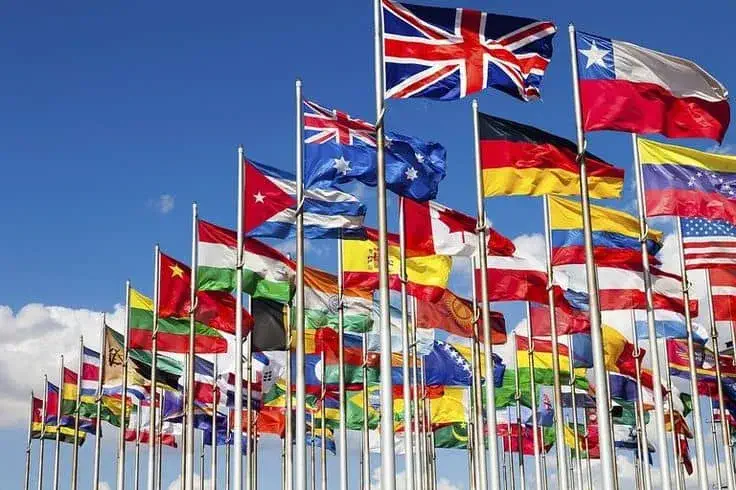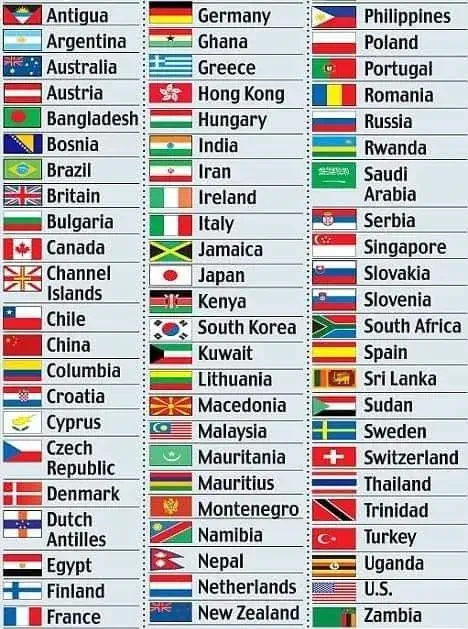
What do a piece of cloth and a nation’s soul have in common? The answer lies in the vibrant hues, intricate patterns, and enduring symbols of national flags. More than just colorful emblems, flags are powerful storytellers, weaving together a nation’s history, values, and aspirations. Did you know that Denmark’s Dannebrog, with its striking white cross on a red background, is the oldest continuously used national flag, dating back to 1219? Or that Nepal’s flag is the world’s only non-rectangular national flag, symbolizing the Himalayas and two rival branches of a historic dynasty?
From the blood-soaked revolutions that birthed tricolor banners to the minimalist designs reflecting modern ideals, national flags and their meanings offer a fascinating lens into human civilization. This article explores the origins, symbolism, and evolution of these iconic symbols, revealing how they shape—and are shaped by—the cultures they represent.
Table of Contents
1. A Brief History of National Flags


Flags have been used for millennia, but their role as national symbols solidified during the rise of nation-states in the 17th and 18th centuries. Early flags, like those of medieval European kingdoms, often featured religious symbols or heraldic designs tied to ruling families. The tricolor flag of France, born from the French Revolution (1789), marked a turning point: its blue, white, and red stripes symbolized liberty, equality, and fraternity, setting a precedent for flags as tools of political identity.
Key milestones:
- Maritime Use: Flags gained prominence as naval identifiers, with designs like the UK’s Union Jack (1606) merging crosses of patron saints.
- Decolonization: Newly independent nations in the 20th century, such as India (1947) and Ghana (1957), adopted flags to assert sovereignty.
- Modern Movements: Recent designs, like South Africa’s post-apartheid flag (1994), emphasize unity and diversity.
2. Elements of Flag Design: Colors, Symbols, and Patterns
National flags communicate through deliberate design choices. Understanding these elements unlocks their hidden meanings.
Colors
- Red: Often symbolizes bloodshed (e.g., Mexico’s struggle for independence) or bravery (U.S. flag).
- Blue: Represents sky, peace, or water (e.g., Argentina’s Sky Blue).
- Green: Signifies agriculture, Islam, or hope (e.g., Pakistan’s Islamic identity).
- White: Purity or peace (Japan’s Hinomaru).
- Black: Mourning or resistance (South Africa’s apartheid legacy).
Symbols
- Stars: The 50 stars on the U.S. flag denote states; China’s single star symbolizes Communist unity.
- Crosses: Scandinavia’s Nordic crosses reflect Christianity; Georgia’s five crosses echo its medieval kingdoms.
- Animals: Wales’ red dragon embodies ancient mythology; Albania’s double-headed eagle signifies sovereignty.
Patterns
- Tricolors: Vertical (France) or horizontal (Germany) stripes often represent political ideals.
- Cantons: The upper-left quadrant, as in Australia’s Union Jack canton, acknowledges colonial history.
- Unique Shapes: Nepal’s pennant design and Switzerland’s square flag defy rectangular norms.
3. Flags as Cultural Narratives: Case Studies
USA – Stars and Stripes
The American flag’s 13 stripes honor the original colonies, while its 50 stars reflect current states. Red symbolizes valor, white purity, and blue vigilance—a design codified in 1777 but continually adapted.
Japan – The Rising Sun
Japan’s Hinomaru (circle of the sun) embodies Shinto reverence for the sun goddess Amaterasu. Its minimalist design, a red disc on white, reflects harmony and simplicity.
South Africa – Unity in Diversity
Adopted in 1994, South Africa’s flag merges the ANC’s colors (black, green, yellow) with former colonial hues (red, white, blue). The Y-shape symbolizes convergence into a unified nation.
Canada – The Maple Leaf
Canada’s red-and-white flag, adopted in 1965, replaced a British colonial design. The 11-point maple leaf celebrates nature and inclusivity, avoiding regional or religious symbolism.
4. Evolution Over Time: How Flags Adapt
Flags evolve alongside nations. Libya’s plain green flag (1977–2011), representing Muammar Gaddafi’s political philosophy, was replaced after his overthrow with a design echoing the independence era. Similarly, Rwanda’s 2001 flag abandoned red—a color associated with genocide—for sky blue and green, symbolizing peace and prosperity.
Modern Trends:
- Minimalism: Simpler designs improve recognizability (e.g., New Zealand’s proposed silver fern flag).
- Digital Influence: Flags are optimized for emojis and social media, favoring bold colors and clear symbols.
- Pride and Protest: Flags like the LGBTQ+ rainbow banner inspire national redesigns, such as South Africa’s Pride flag variant.
5. Cultural Significance Beyond Borders
Flags unite people during global events like the Olympics, where they symbolize athletic and national pride. They also serve as protest tools: Ukraine’s blue-and-yellow flag became a global emblem of resistance during the 2022 Russian invasion. In art and fashion, flags inspire everything from Jasper Johns’ paintings to Beyoncé’s Grammy performance costumes.
Conclusion
National flags and their meanings are far more than decorative symbols—they are living chronicles of triumph, struggle, and identity. From Denmark’s ancient Dannebrog to South Africa’s rainbow-inspired banner, these emblems remind us that every thread of color and stroke of design carries a nation’s heartbeat. As globalization and digital media reshape how we view flags, their role as unifying symbols will only grow. Next time you see a flag fluttering in the wind, look closer: you might just glimpse the soul of a nation.
By exploring national flags and their meanings, we uncover the rich tapestry of human history and aspiration. Whether you’re a history buff, a designer, or simply curious, these emblems invite us all to appreciate the stories stitched into their fabric.
You Might like
List of Top 10 Geography Articles
List of Top 10 Culture Articles
Frequently Asked Questions (FAQs)
Why do so many flags use red, white, and blue?
Red, white, and blue gained prominence through influential flags like those of France, the U.S., and the UK. These colors often symbolize universal themes: red for courage, white for peace, and blue for justice or vigilance.
Are there rules for designing a national flag?
While no universal laws exist, vexillologists (flag experts) recommend:
Simplicity: A child should be able to draw it from memory.
Meaningful Symbols: Use icons relevant to the nation’s history.
Limited Colors: Two to three colors enhance visibility.
Which countries have changed their flags recently?
Mauritania (2017): Added red stripes to honor independence sacrifices.
New Zealand (2016): Considered replacing the Union Jack with a silver fern design but retained the original.
Malawi (2012–2013): Briefly reverted to a pre-2010 design.
What does a black-and-white flag mean?
Some black-and-white flags symbolize specific movements. Estonia’s proposed national flag (1919) used these colors to reflect its limestone cliffs and winter nights, but it was rejected for being too somber.
Which is the oldest national flag still in use?
Denmark’s Dannebrog (1219) holds the title, though Scotland’s Saltire (832) and Austria’s red-white-red design (1230) are also ancient.
